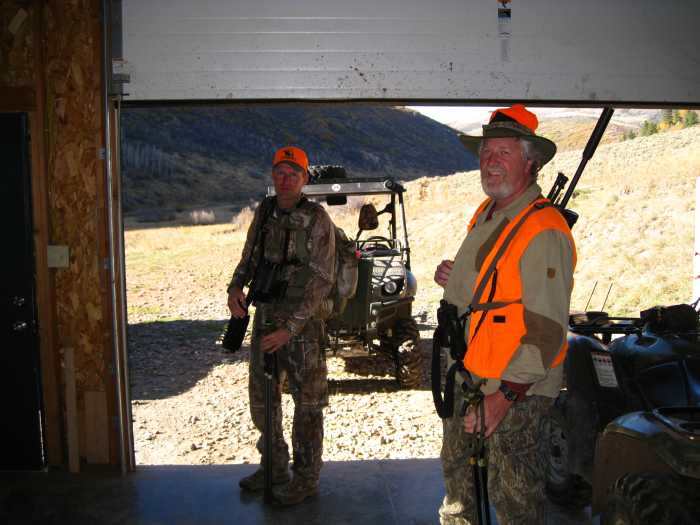
Hunting Big Game: “The Dead Zone"
When hunting big game what you think a well placed shot would be can turn in to a disaster, what I call “The Dead Zone”. The dead zone can be hit when aiming too high on the animal; it is the little area between the spine and the lungs where a bullet can almost instantly paralyze an elk and within seconds the elk regains his penalization and runs off. If the shot placement penetrates part of the lungs, the elk can go a long distance before bedding down, with minimal blood to track.
When hunting big game if you are going to take a shot high on the body you need to move forward on the elk’s shoulder or neck. Above an elk’s shoulder is the widest part of the spine, which ups your chances of breaking the elk’s back. Aiming forward on the body will almost eliminate the dead zone because if you don't hit the spine you hill hit lung muscle and probably bone. Furthermore, when discussing this I am talking about high weight retention bullets typically the one we would be using while hunting elk. If you are not using high weight retention bullets like a ballistic tip or a Berger, your aiming point should change and you should probably be aiming high on the elks body. Aiming in the vitals or low on the shoulder can get the job done with an explosive bullet but you will probably be tracking for a while. Aiming high on elk with an explosive bullet will most likely send fragmented pieces into the spine dropping the elk where it stands. If you hit an elk in the dead zone with an explosive bullet your bullet will most likely fragment into the spine and lungs, which will eliminate the dead zone all together. I prefer a high weight retention bullet when hunting elk. For one you have a much bigger kill zone, the bullet can go through muscle and bone, and you’re not aiming high on the animal. Most hunters have a tendency to shoot high, so I’d rather have the kill zone as low as possible.
It is extremely important when hunting big game that after your first shot you automatically re-chamber a round and get directly back on the elk. If the elk is on the ground flailing about, stay on the elk until a follow up shot can be made or it is clearly dead. If the elk dies before you need a follow up shot - that is great - but you need to be in position to make the shot. The biggest mistake you can make is after taking your first shot you start celebrating and take your scope off the elk. Most of the elk I see or hear about getting away is due to the elk getting hit hard on the first shot, it hits the ground kicks awhile then regains strength, gets up and moves about his business. Don't make this mistake, keep your composure and know that your second shot is just as important as your first.
